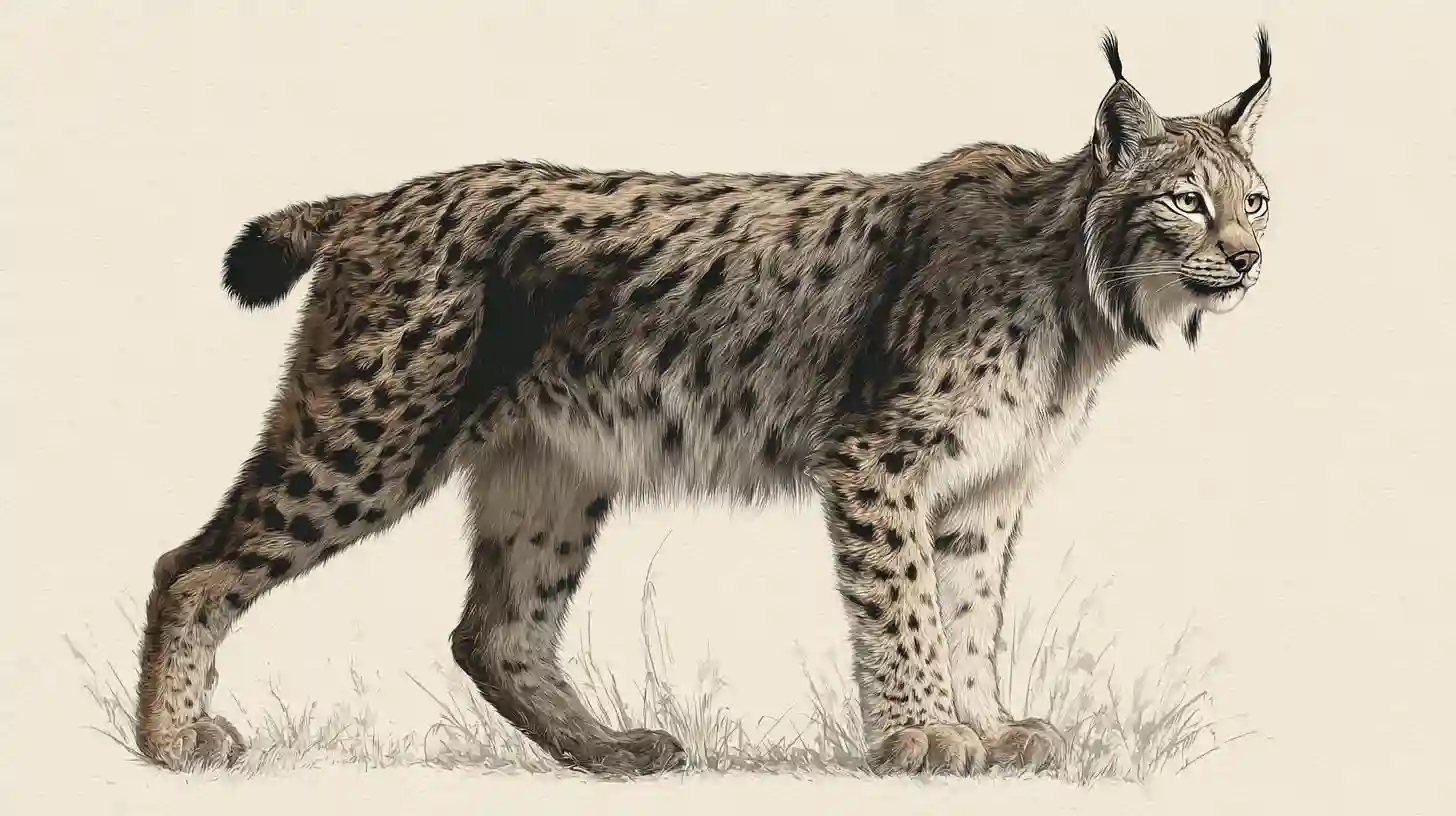
The Eurasian lynx is a formidable feline of the northern forests and highlands, found across a broad swath of Europe and Asia where coniferous, mixed, and alpine habitats meet and where the long winters shape the rhythms of its life. This species, scientifically designated as Lynx lynx, is renowned for its striking profile: a sturdy body built for stealth, long legs that lift its steps above deep snow, a short tail with a black tip, and the signature tufts that crown its ears along with a ruff of fur framing a keen face, which together give the lynx a look both regal and alert. Its coat thickens with the season, a protective mantle that ranges in shade from warm greys to rich browns, often with pale underfur that helps it blend into frost tinted landscapes and shadowed groves. In milder regions the coat remains sleek and supple, while in harsher climates the fur becomes denser and the guard hairs lengthen, providing insulation against biting cold, wind, and snow. Body proportions emphasize strength and precision; the lynx carries a powerful shoulder girdle, muscular hindquarters, and strong paws whose size compensates for traction on slick ground, allowing it to move with surprising vigor when pursuing prey or crossing rugged terrain. The limber tail, though short, acts as a counterbalance during swift pounces and agile turns that cut through brush and broken terrain, and the strong forelimbs are well suited to grasping and securing prey before delivering the final bite. Although the size of individuals can vary with geography and resource availability, the Eurasian lynx tends to exceed many other wild cats in mass while remaining more compact than the larger northern cats whose ranges overlap its own, a balance that underlines its role as a hunter well adapted to the forested mosaic of its world.
The lynx is a specialist predator that thrives on a diet shaped by the seasons and the communities of herbivores and small mammals that inhabit its range. Medium sized ungulates such as roe deer and chamois, along with smaller deer species and a suite of forest dwellers, form the core of its meals, yet the lynx is opportunistic and will seize a hare, a grouse, or a restless rodent when the opportunity arises. Snow can both aid and challenge the hunter; in deep winter the lynx uses its stealth and quiet approach to stalk through tracks and brush, waiting for a moment when a potential meal reveals itself against a snowy backdrop. It often uses a combination of ambush tactics and short bursts of speed, and it will drag a kill into a sheltered refuge at times to feed over several days, allowing it to endure periods when prey becomes scarce. The predator’s paws, with their soft pads and retractable claws, provide grip on ice and cushion against the cold, while its keen sense of hearing and vision helps it detect movement even when prey are obscured by wind or snowdrifts. This lifestyle situates the lynx as a pivotal force in its ecosystem, helping to regulate herbivore populations that in turn influence vegetation dynamics and forest structure, a cascade of effects that ripple through the food chain and impact the broader health of temperate and boreal woodlands.
Solitary by nature, the Eurasian lynx keeps personal territories that may overlap with those of others but are fiercely defended through scent markings, scratching of trees, and vocal signaling that travels through the forest. Females tend to establish home ranges that encompass areas where they will raise their litters, while males patrol extensive corridors that intersect several territories, a spacing that reduces direct competition and facilitates mating opportunities during the breeding season. Courtship is a dramatic and brief affair, leading to gestation that yields a litter of several cubs who depend on the mother’s vigilance and teaching for roads through life in the wild. Cubs learn to stalk, pounce, and handle prey while staying close to the den or a sheltered refuge until they gain strength and independence, a process that unfolds over months as the season cycles and weather changes shape the landscapes around them. Throughout its life the lynx relies on camouflage and patience, lingering in shadowy belts of forest, skirting along the edges of clearings, and using the cover of dusk and predawn hours to move with minimal disturbance, and this nocturnal and crepuscular pattern contributes to the enigma that surrounds the animal to many observers who glimpse it briefly through the trees or hear its distant growl or a short, sharp call that cuts the quiet of night.
Conservation status for the Eurasian lynx reflects a complex mosaic of fortunes across its broad range. In many regions protected areas and quiet landscapes have allowed numbers to stabilize and even grow, yet in other areas habitat fragmentation, illegal hunting, and road traffic create persistent challenges that can push local populations into decline. Concerted efforts to conserve habitat corridors, reduce human-wildlife conflict, and support coexistence with rural communities have shown promising results in parts of Europe and Asia, where reintroduction and restoration projects have helped recolonize places where the lynx had once vanished. Tourism, ecological research, and public education about the ecological role of apex or near apex predators have raised awareness and fostered stewardship, helping to ensure that future generations may encounter the lynx in the wild rather than only in memory or on film. The tale of the Eurasian lynx is thus one of resilience and adaptation, of a creature that thrives on the edge of forests and mountains, and of humanity learning to share the same landscapes with a hunter that embodies both the beauty and the balance of wild nature. It remains a symbol of wilderness health and a reminder of the enduring complexity of forest ecosystems across continents, where predators, prey, and plants mingle in a continuous, evolving dance that sustains the very liveliness of the woodlands.